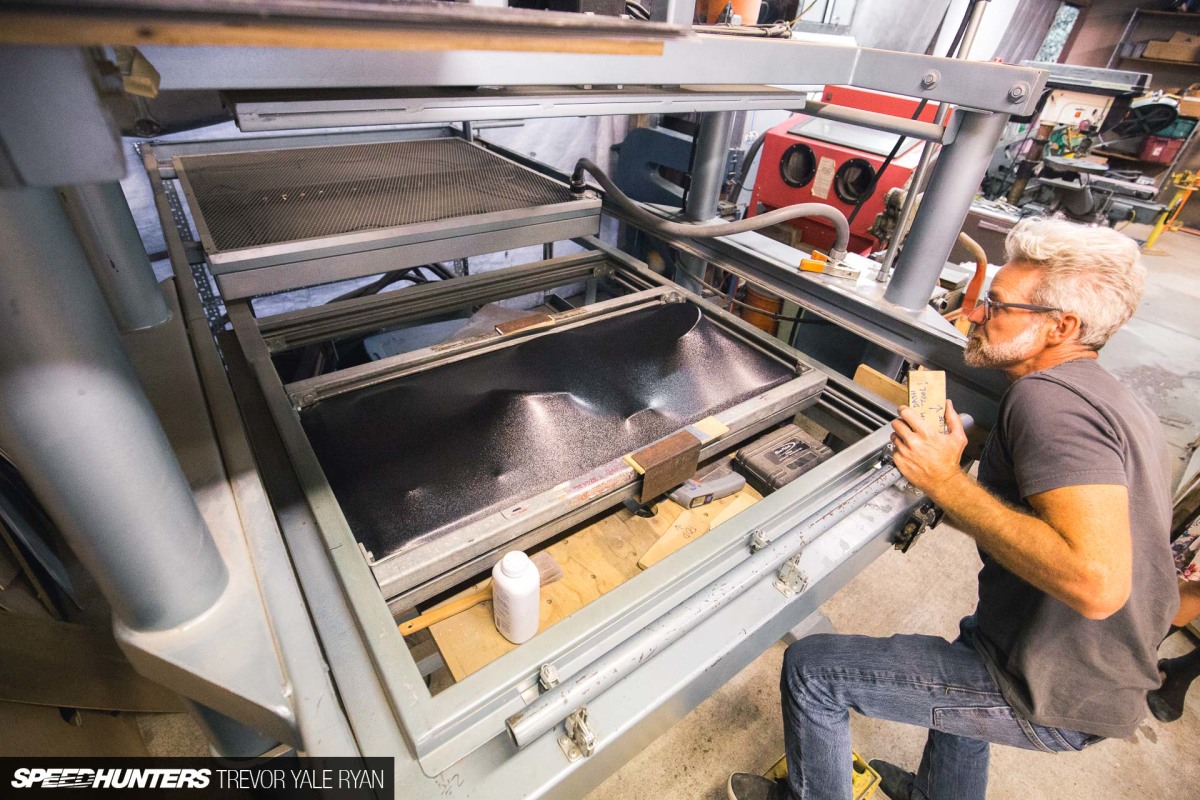
As some of you may know, I slaved away for four years spending 30-odd thousand dollars to get my degree, like a proper American. However, if my work here is any indication, my day to day now involves exactly zero mechanical engineering.
While I had a ‘real’ job, as some say, for nearly a year after graduating, it really wasn’t cutting it. Although I keep telling myself I’ll go look for engineering work it simply hasn’t happened, something not helped by the fact that everyone I talk to about it says to keep doing what I’m doing. I’m definitely not ruling out engineering work in my future, but I was absolutely miserable doing what I was doing. This is nothing against anyone with a job like I had; there are plenty of fulfilling occupations that can only be had after four-plus years of coursework. But there are also a handful of careers you can find yourself in without any certificates or degrees at all.
Forrest Koogle has found one for himself, but he’s easily spent more time perfecting his craft than I did earning a piece of paper which reads ‘Bachelor of Science’ along with some fine print I never bothered to look at. If you haven’t already read about my afternoon at the skatepark and his workshop, as well as roaming backroads in the Napa mountains with a pair of classic BMWs, you may enjoy this story more if you fill yourself in first.
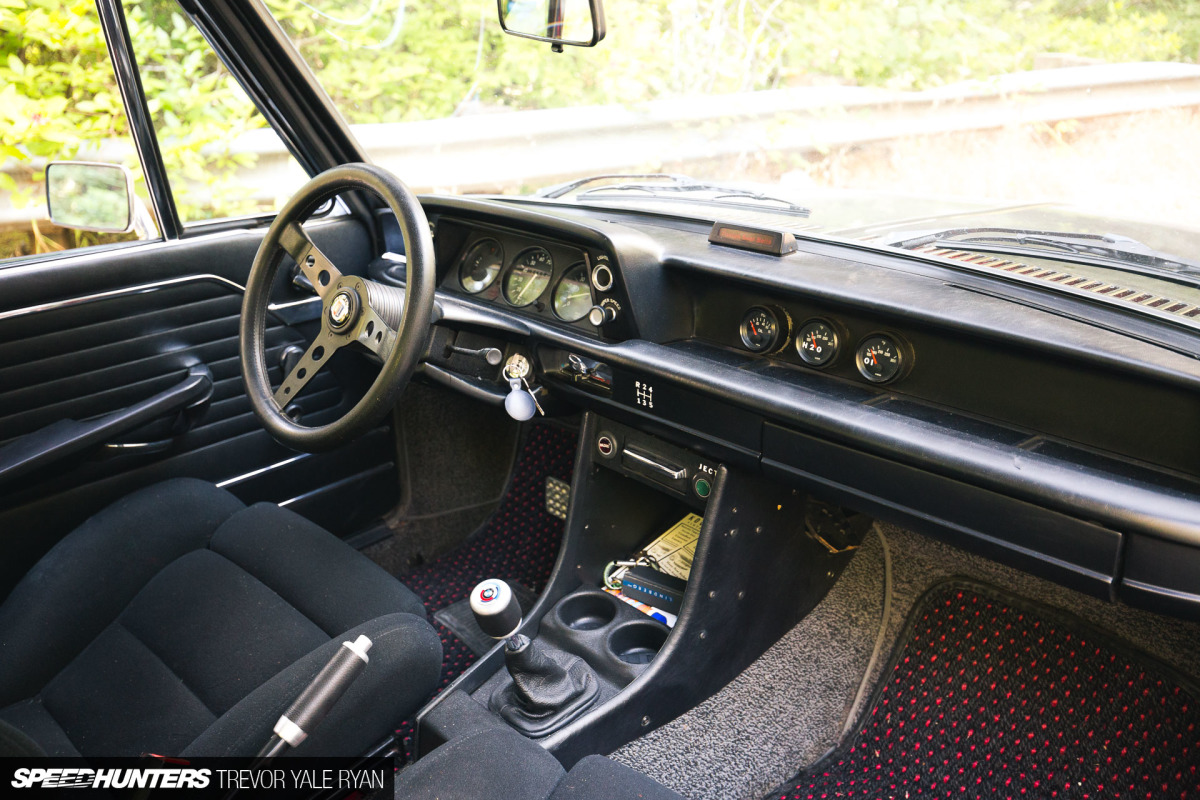
Cruising around with Forrest I noticed that his friend Rick’s car, which Forrest was driving, had a number of parts which seemed far too useful to have come from a factory in Munich in the early 1970s. I’m mostly talking about the cupholders, but the shifter setup is also a KoogleWerks piece.
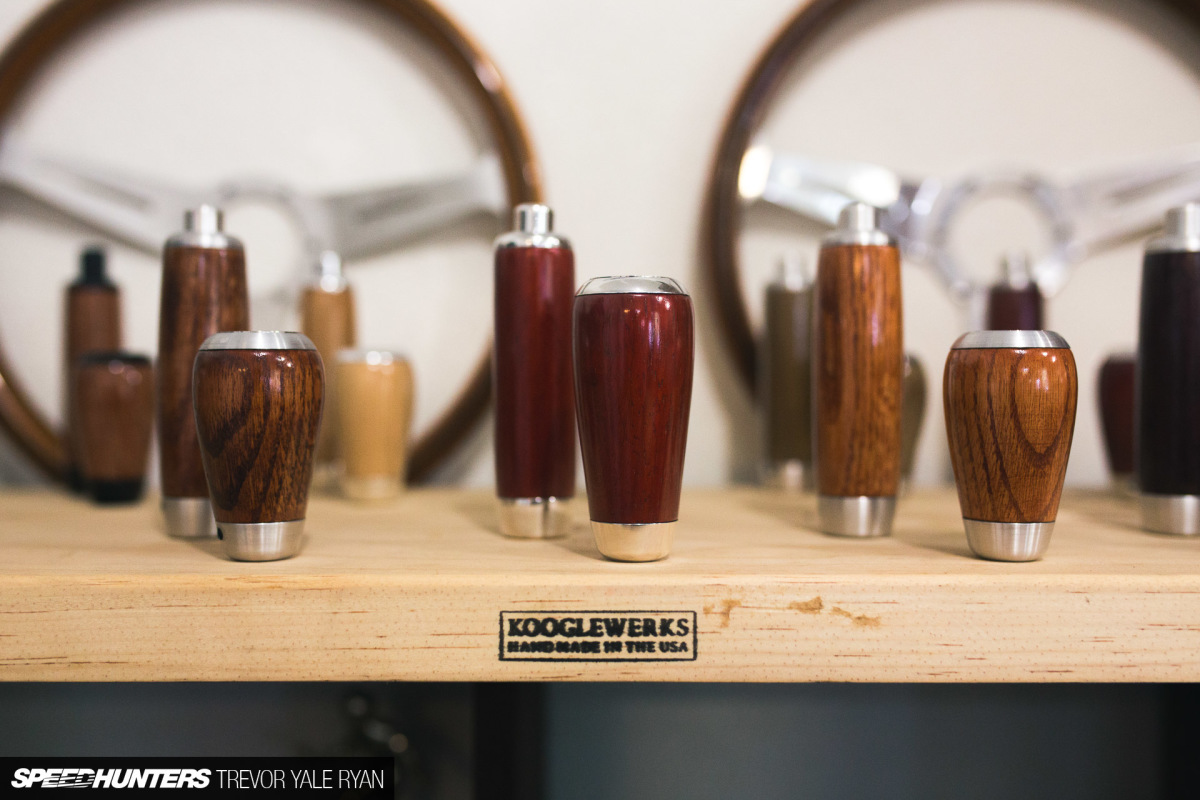
While these are also handmade in-house by Forrest and Pierre, this is an art that we didn’t get into this time around. This is likely due to my excitement when I pointed out the plastic parts during our drive through the valleys around Mount Hood in Northern California.
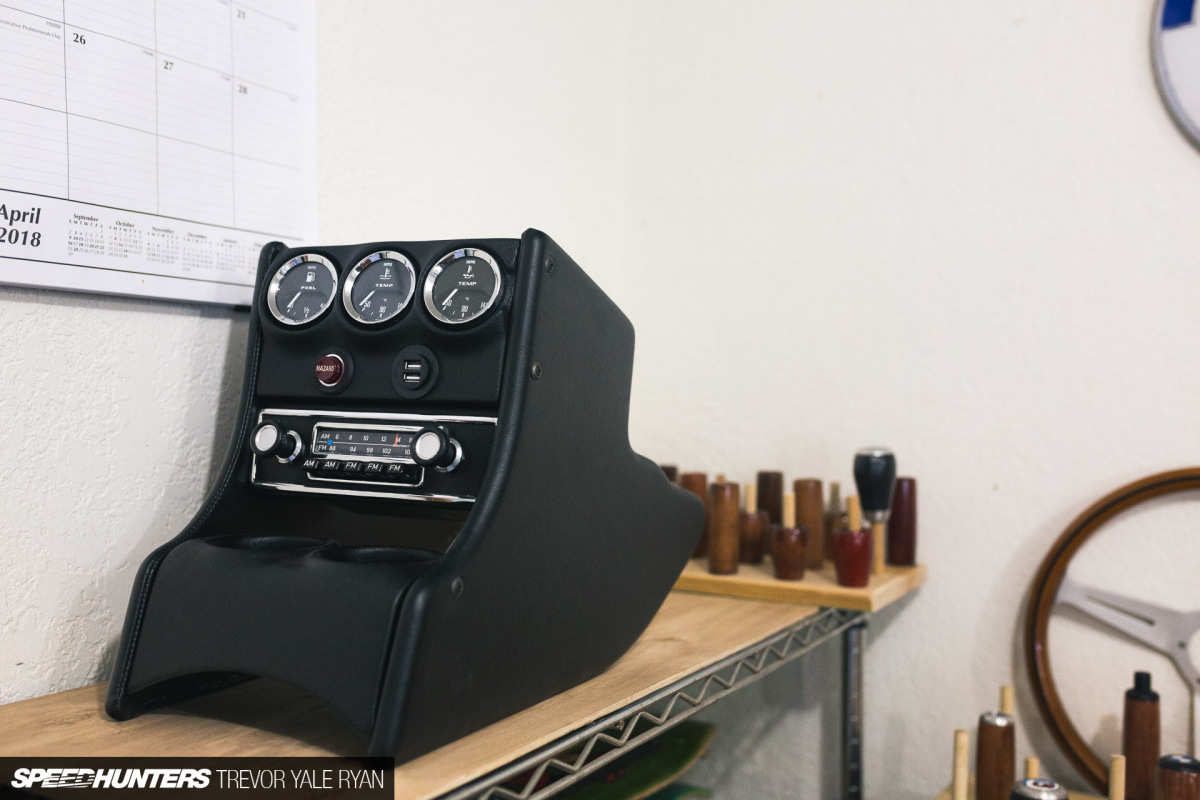
When I first saw the cupholders I assumed they’d been 3D printed, but the finish was much nicer and more factory-esque than any additive manufacturing process I’ve come across. Forrest explained that they’re in fact created from flat plastic sheets using thermoforming techniques.
But what does that entail?
The Big PictureAs with most consumer products, it all started with an idea. Anyone with an older, smaller car who likes to drive a little bit fast has probably spilled hot coffee or cold water on their pants at least once, so it’s not hard to imagine where the idea came from.
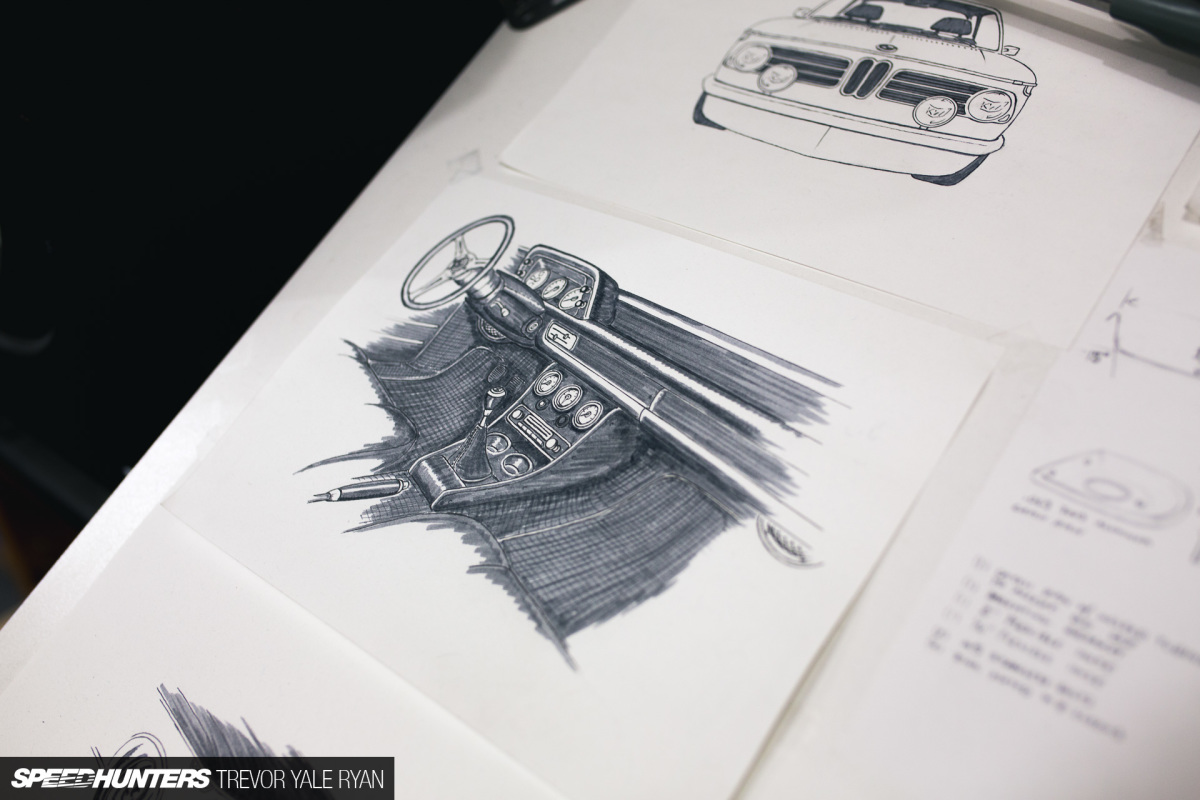
But the next step is a little less straightforward and involves pen and paper. It might not come as a surprise that Forrest almost went to art school, the keyword here being almost. His love for cars won out, but he’s still able to spend plenty of time turning vague ideas into real designs using a number of self-taught skills.
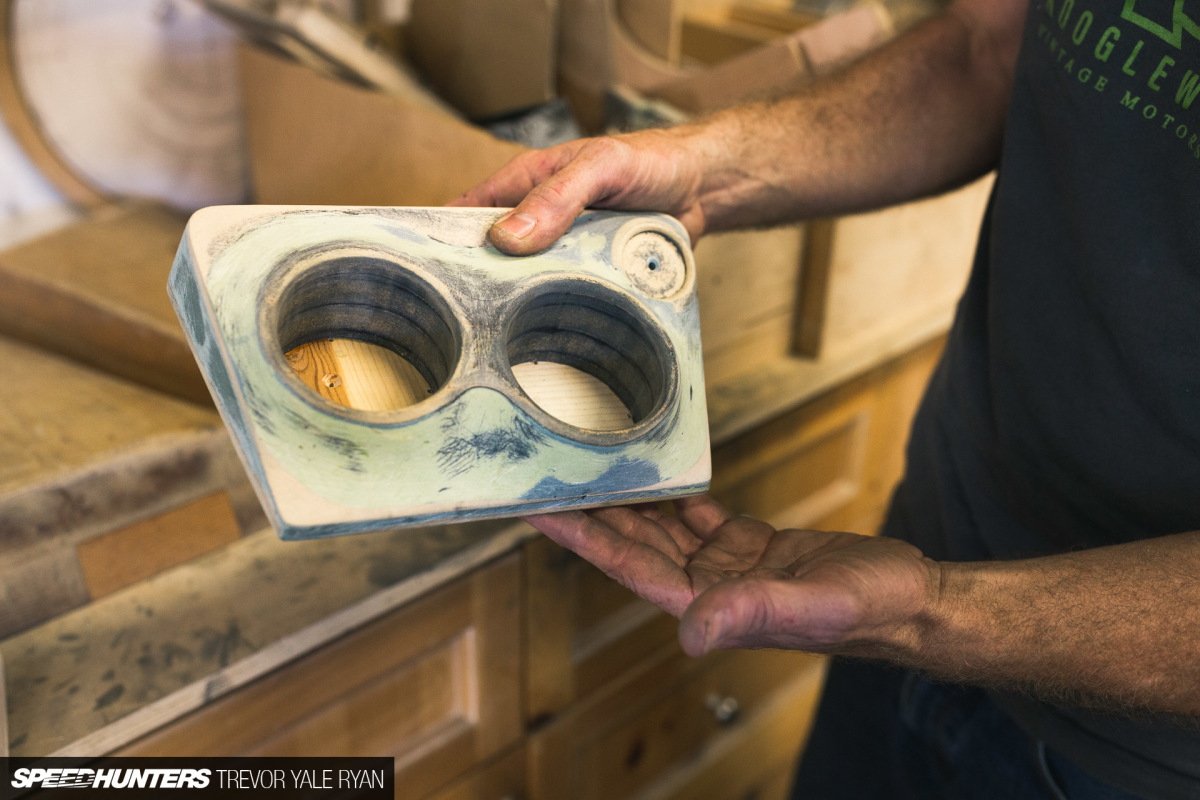
I imagine there are probably a few scale drawings in between the 2D concept art and 3D molds, but this is the next big step nonetheless. It’s nothing earthshakingly revolutionary, but rather quite simple. That is, if you have the eyes and hands for it.
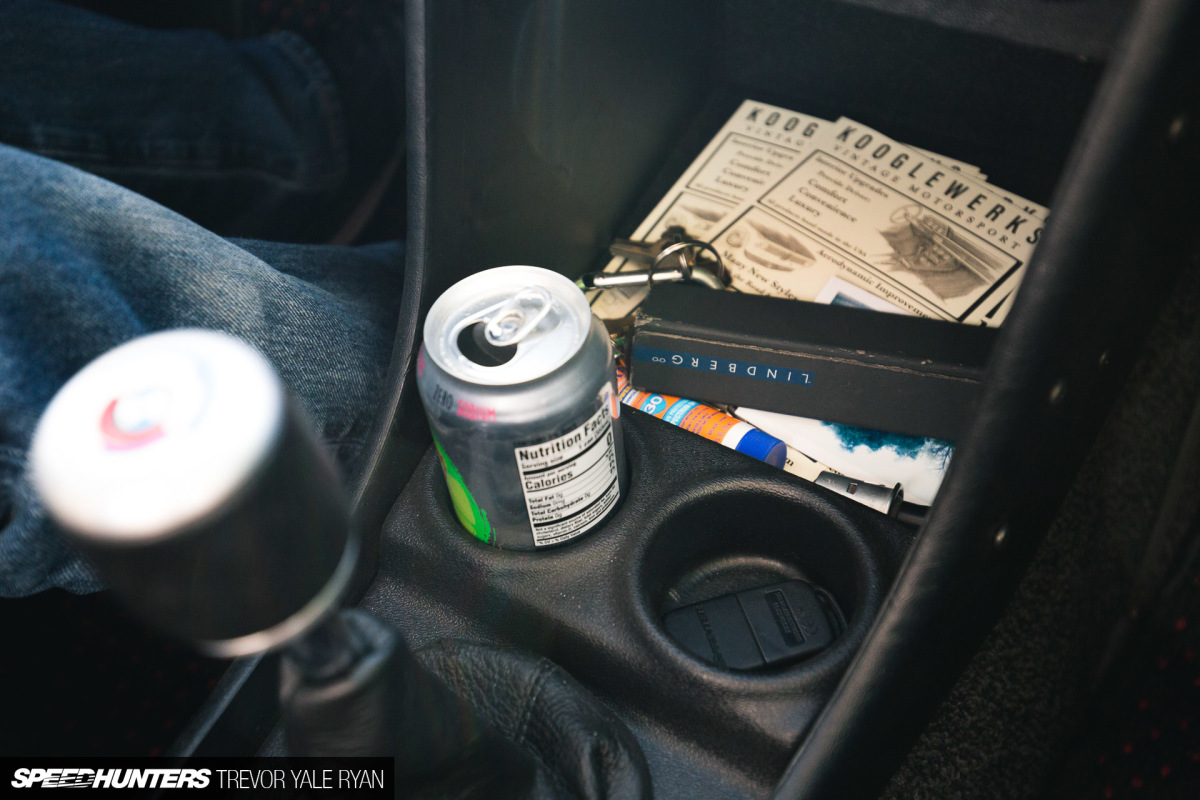
From here the mold is shoved into a textured sheet of nearly molten plastic. It’s then cut out, finished, and installed. Simple, right?
It seems straightforward enough, and the same can be done with clear materials as well. Take a closer look at this photo from my last story and you’ll notice a subtle KoogleWerks initials imprinted over the headlights.
Next, we’ll take a look at the part of the process where the plastic magically turns into a part.
Thermoforming Mumbo Jumbo
As mentioned, you’ll need a proper mold to do this, and there are many artistic and technical details that go into creating a reliable, useable one. I’m not going to expand on this, but molds can be made of wood and body filler or plaster, to name a couple possibilities.

From here, they’re inserted into the bed of the vacuum thermoforming machine. The larger your machine, the larger (or more) parts you can make.


With a flat sheet of material (in this case grained black ABS plastic) clamped into the metal frame, you then slide the heating element, which is more like an oven, over the top of it.
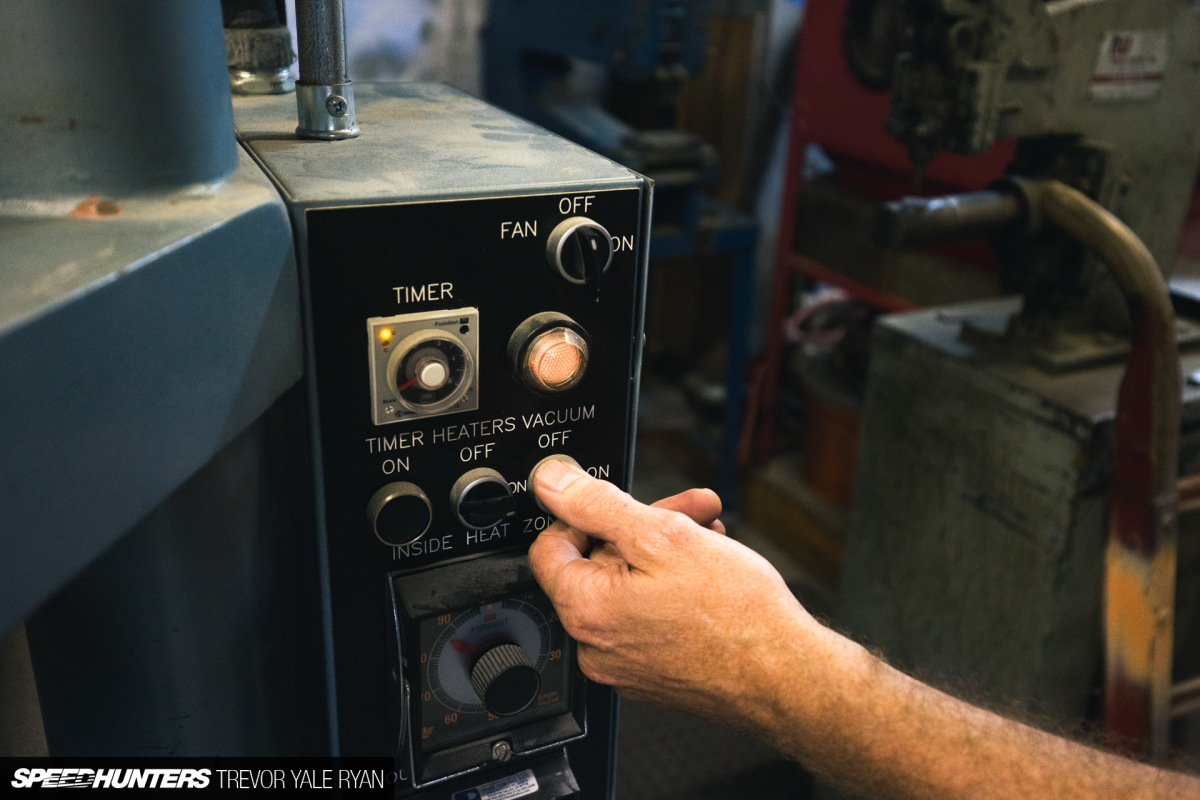
Next, flip a few sturdy toggle switches and you’re off to the races.
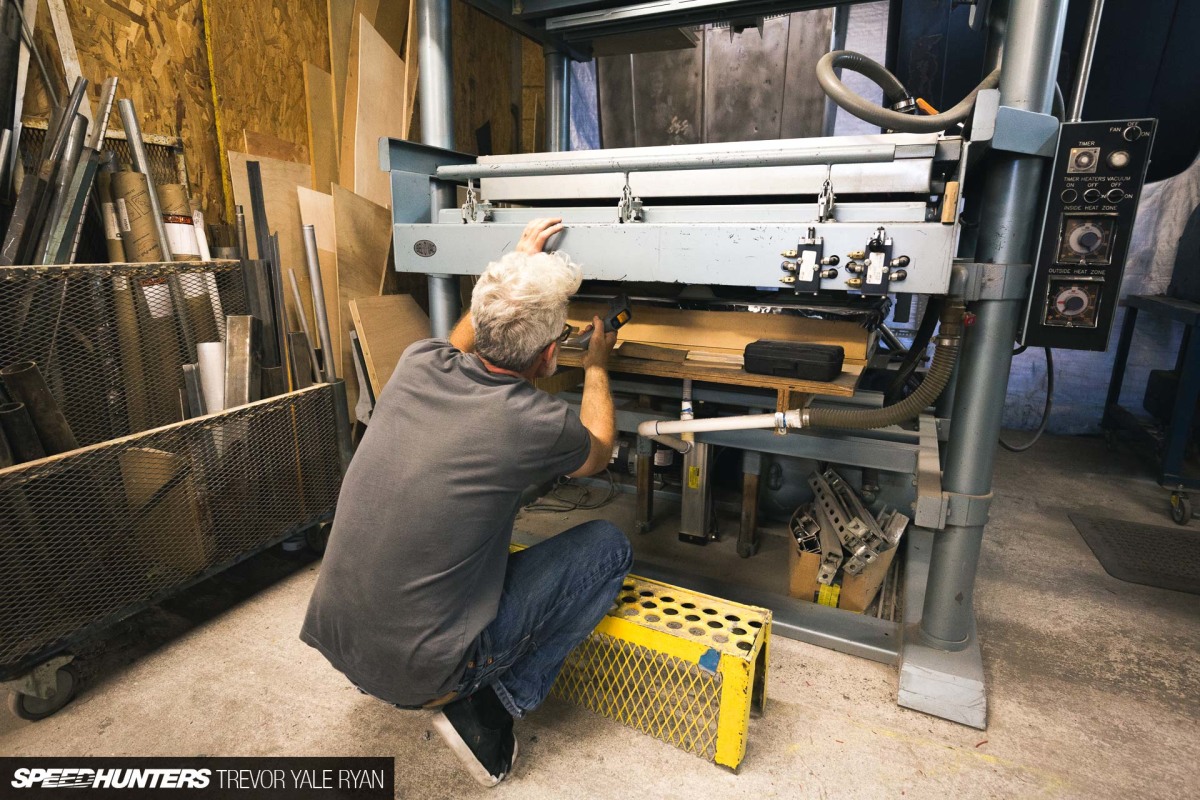
This is the stage which requires constant manual monitoring. It all happens pretty quickly, and you need to get the temperature just right for the parts to turn out.

Not hot enough and the plastic won’t snug itself into all the nooks and crannies; too hot and you’ll scorch the ABS. What happens next is best viewed in a rapid-fire gallery. I should have taken a video but you can get some sense of how cool (and satisfying) it is from these photos.
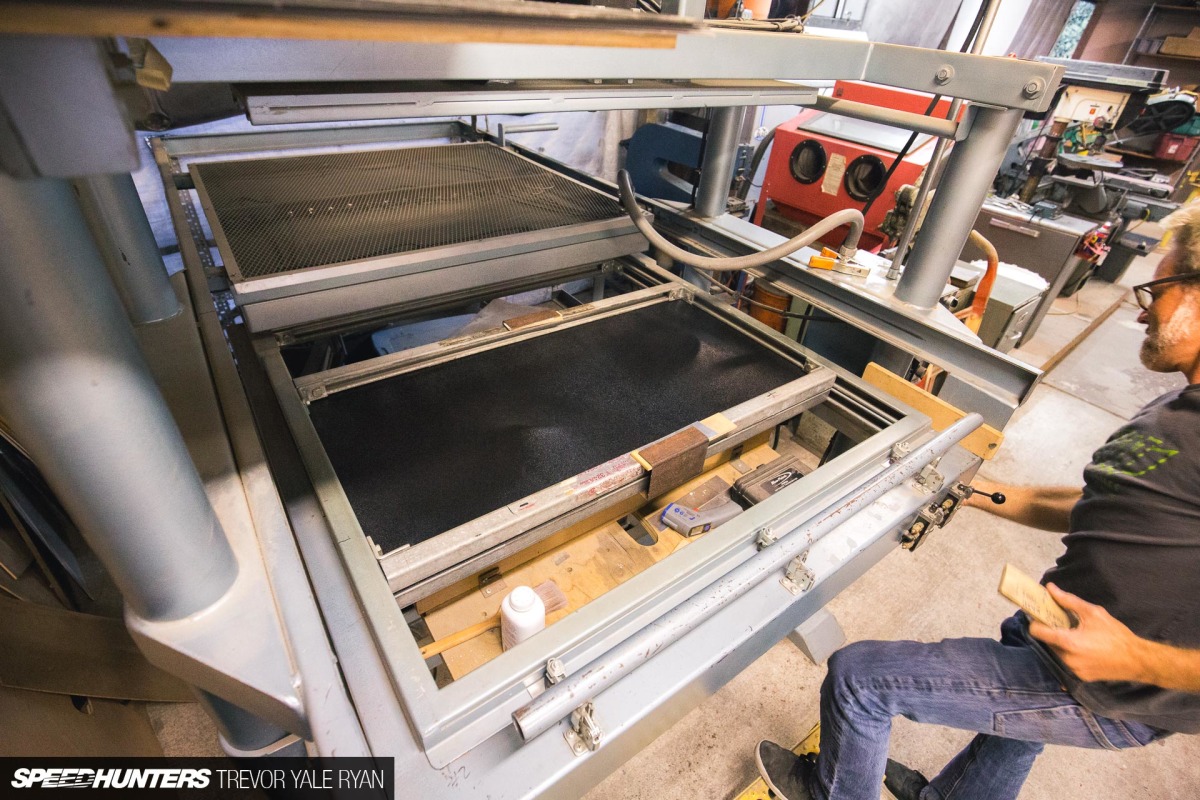
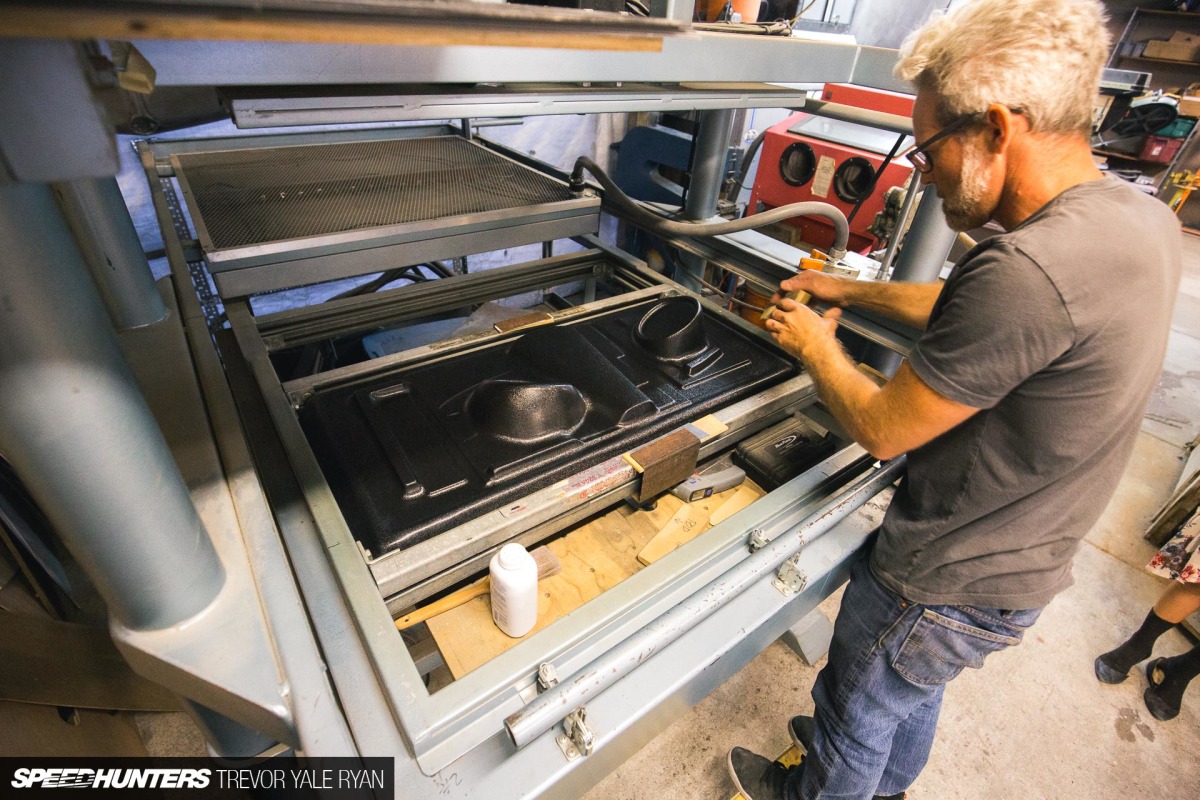
Heating element slid away, the mold is forced upwards into the soft ABS. Vacuum pressure below causes the air above the plastic to further push the material into the mold producing smooth curves and a consistent finish. It takes just over one second, and suddenly you see the parts emerging and Forrest jumping into action.
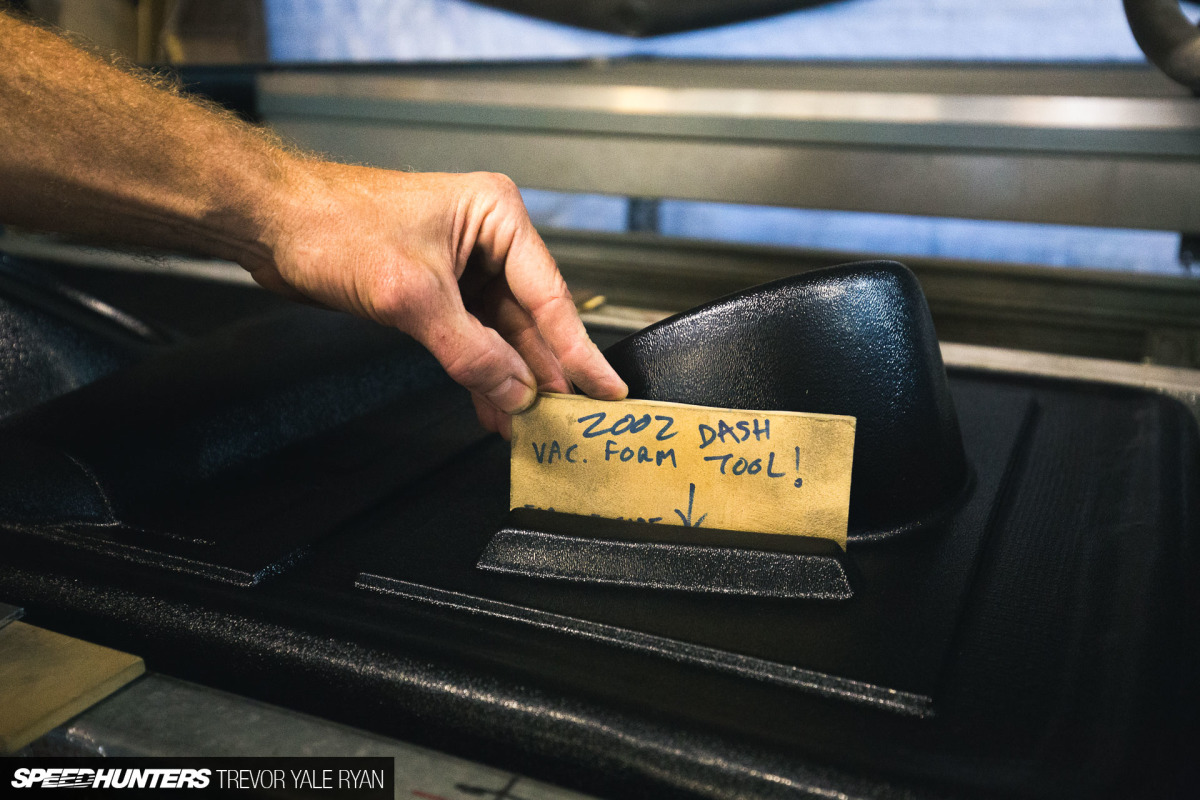
He’s made a special tool to help the plastic take the right shape in some of the problem areas, but he’s got to act while the plastic is still soft and toasty. Each part has its intricacies and I noticed a dozen wedges of various size and shape to help iron out any issues.
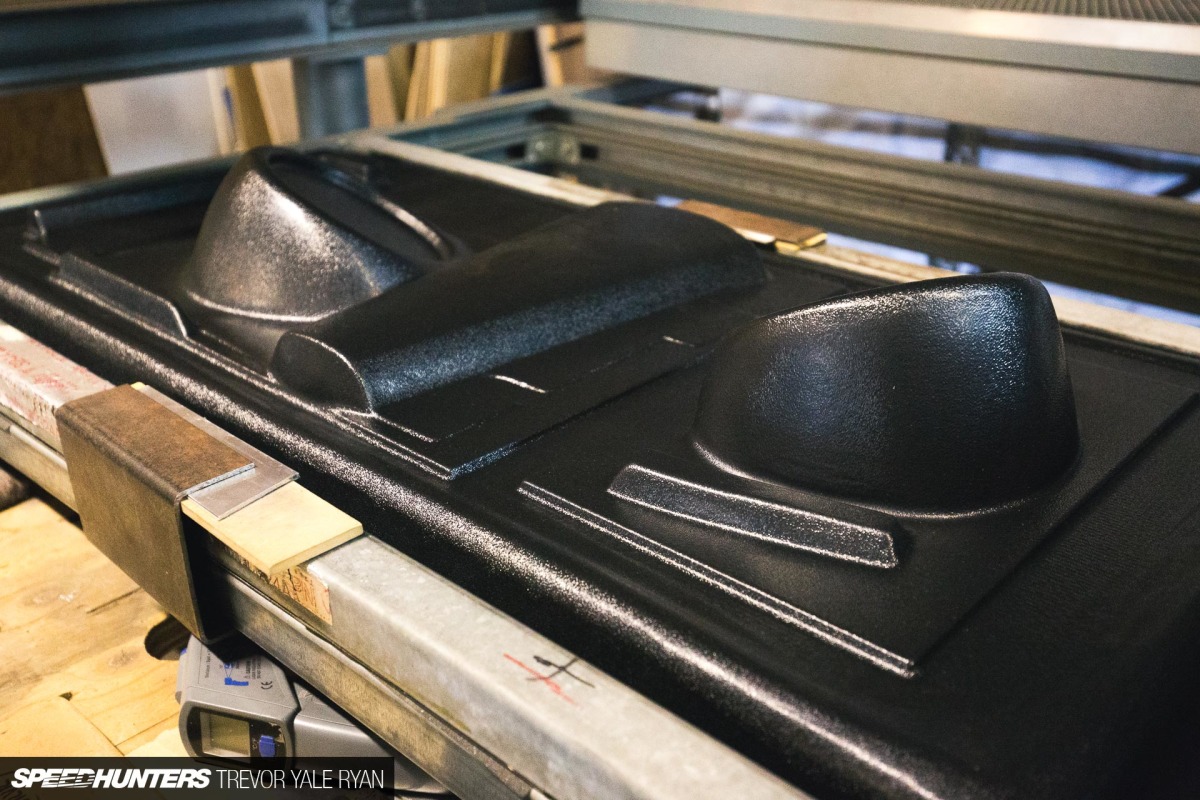
A quick job later and the form is there. Then, all that’s left is the painstaking finish-work I’ve briefly described above. Having vaguely heard of the process in school it was was really, really awesome to watch the makings of parts appearing in the ABS.
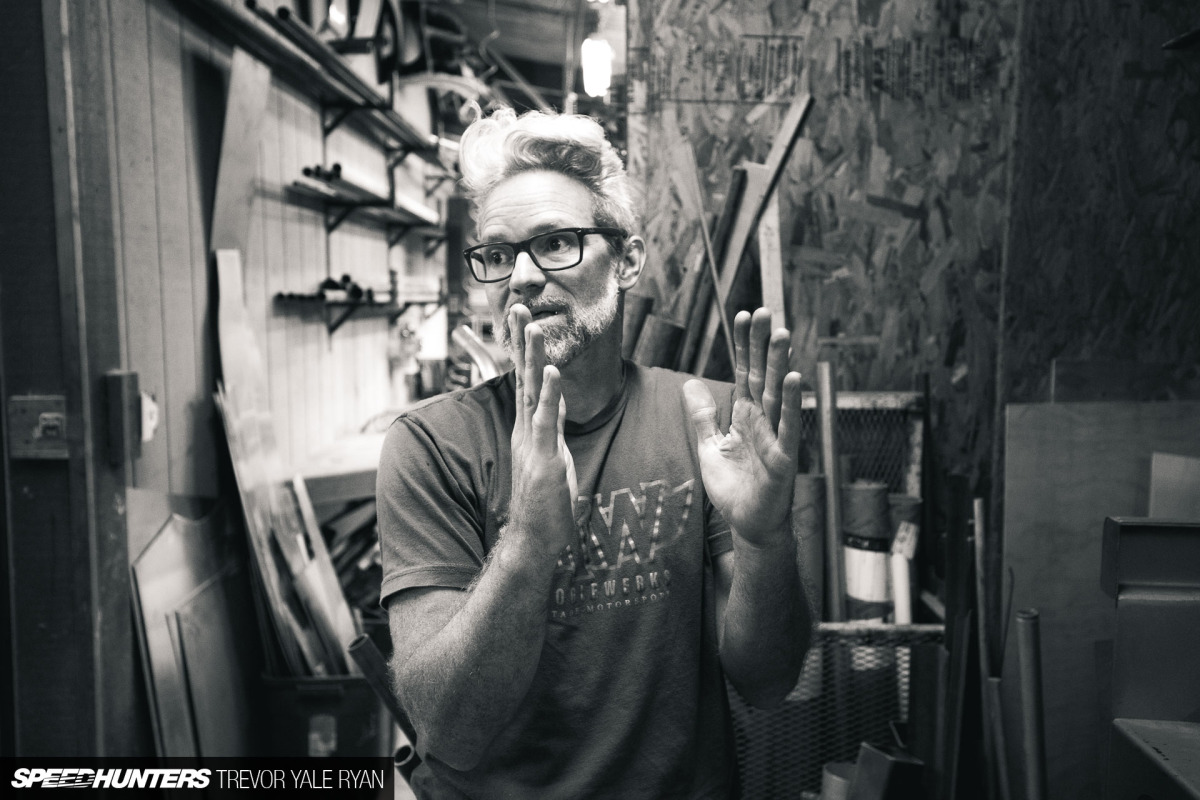
I’ve glossed over a lot of the finer details of thermoforming and there are all manner of considerations that must be balanced when designing a part to be made this way. As Forrest describes, one such detail is known as draft angle which is the designed taper of a molded part so that it can be separated from the mold.
You also may have noticed the baby powder next to the machine while Forrest was working. This is to further help separate the material from the mold in instances where draft angle is insufficient or cannot be designed into the part. Draft angle (and baby powder) also applies when designing and pouring cast parts.

You can take a peek at the KoogleWerks website to see what other odds and ends Forrest and Pierre make in the workshop, but unless you’ve got a BMW it might just make you upset.
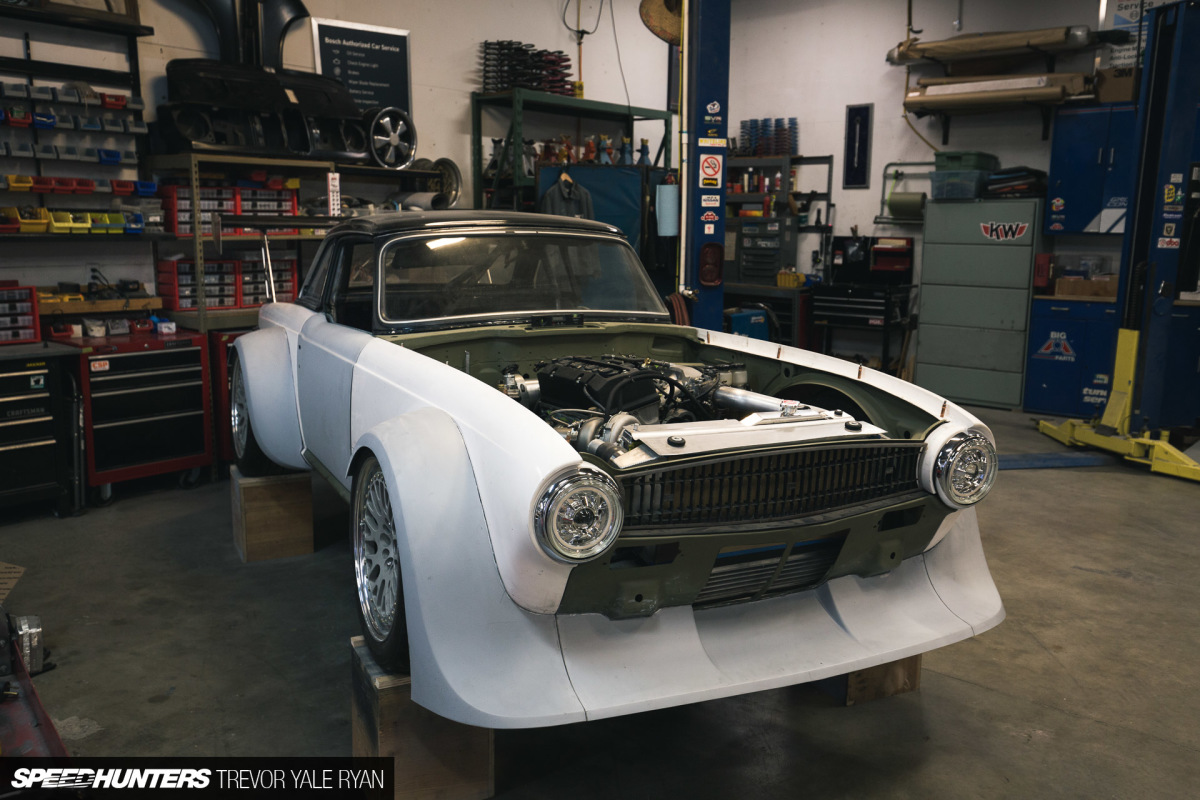
So, finally, this concludes our tour at KoogleWerks.
Actually, it doesn’t quite…
Trevor Yale Ryan
Instagram: tyrphoto
TYRphoto.com

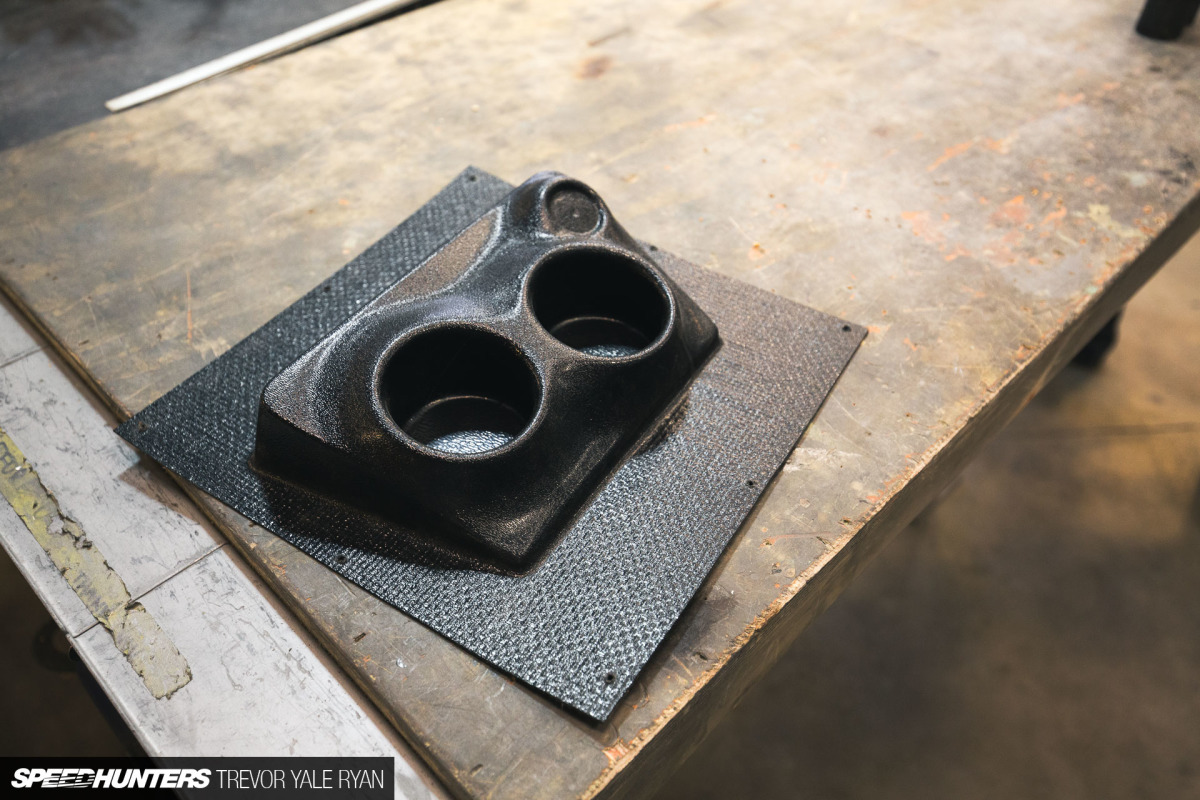
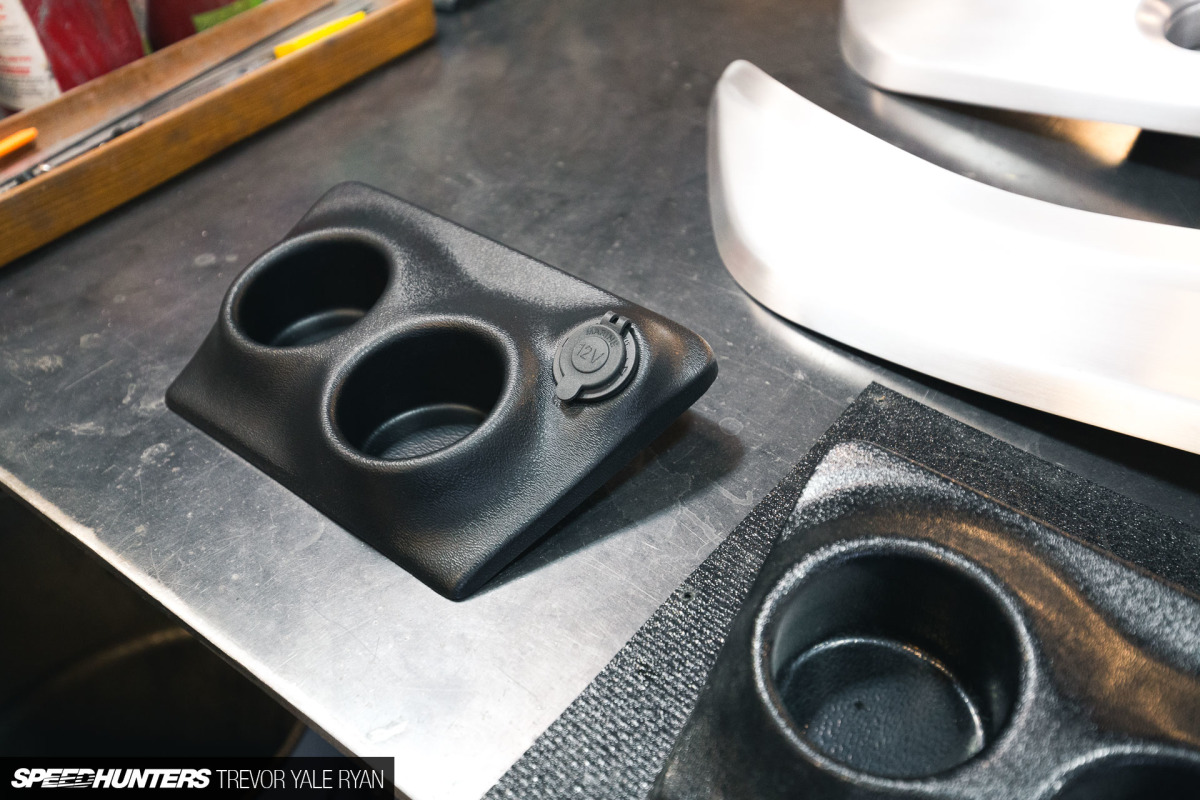
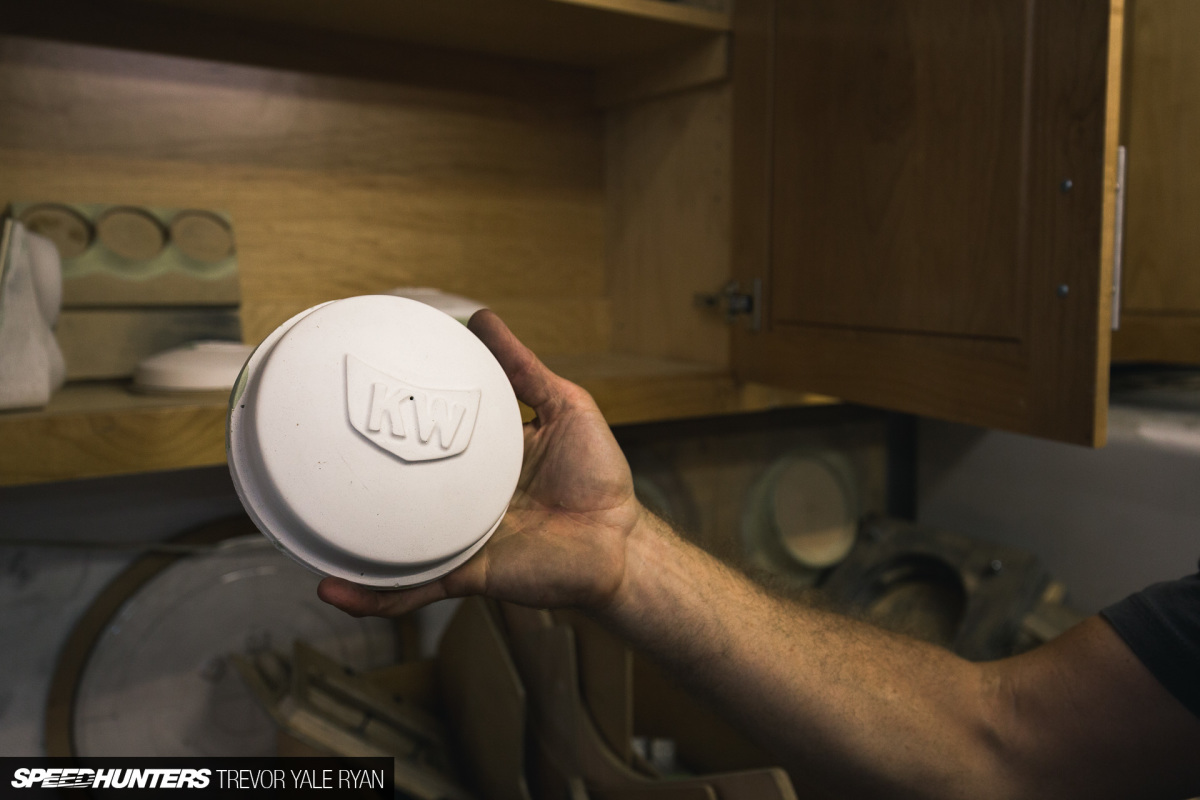
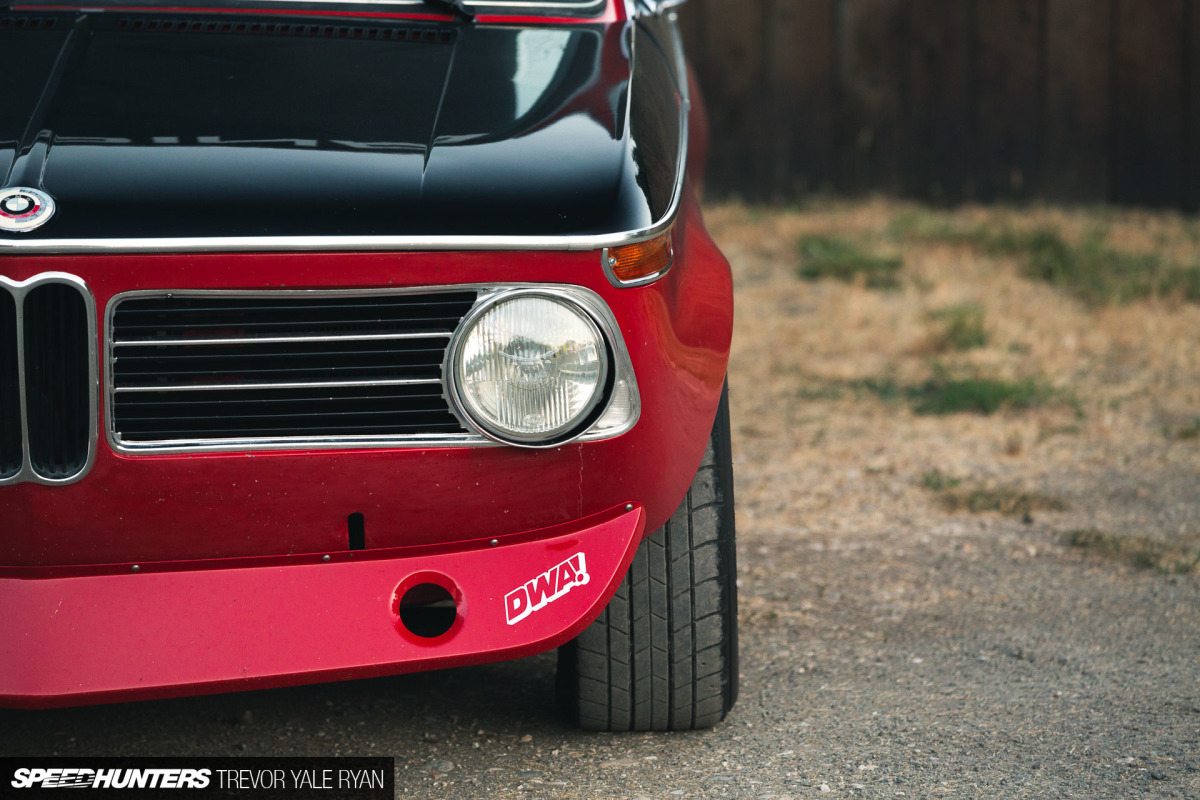
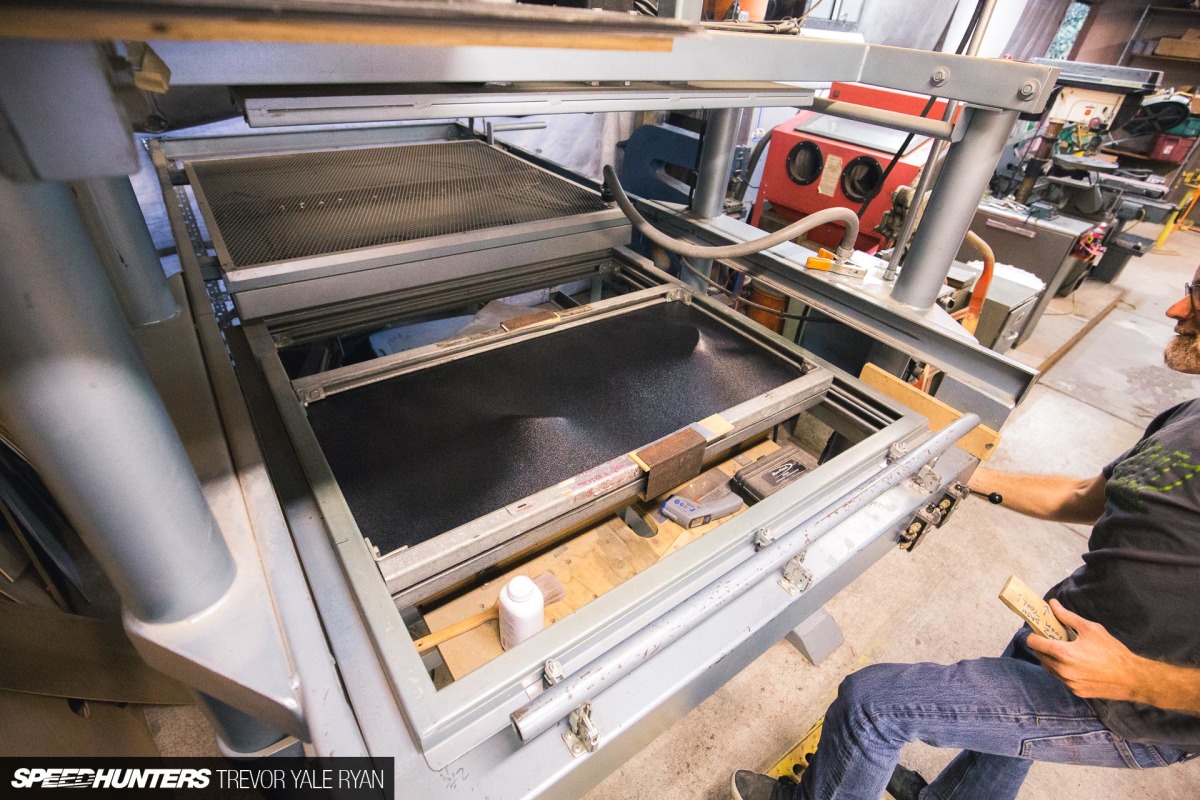
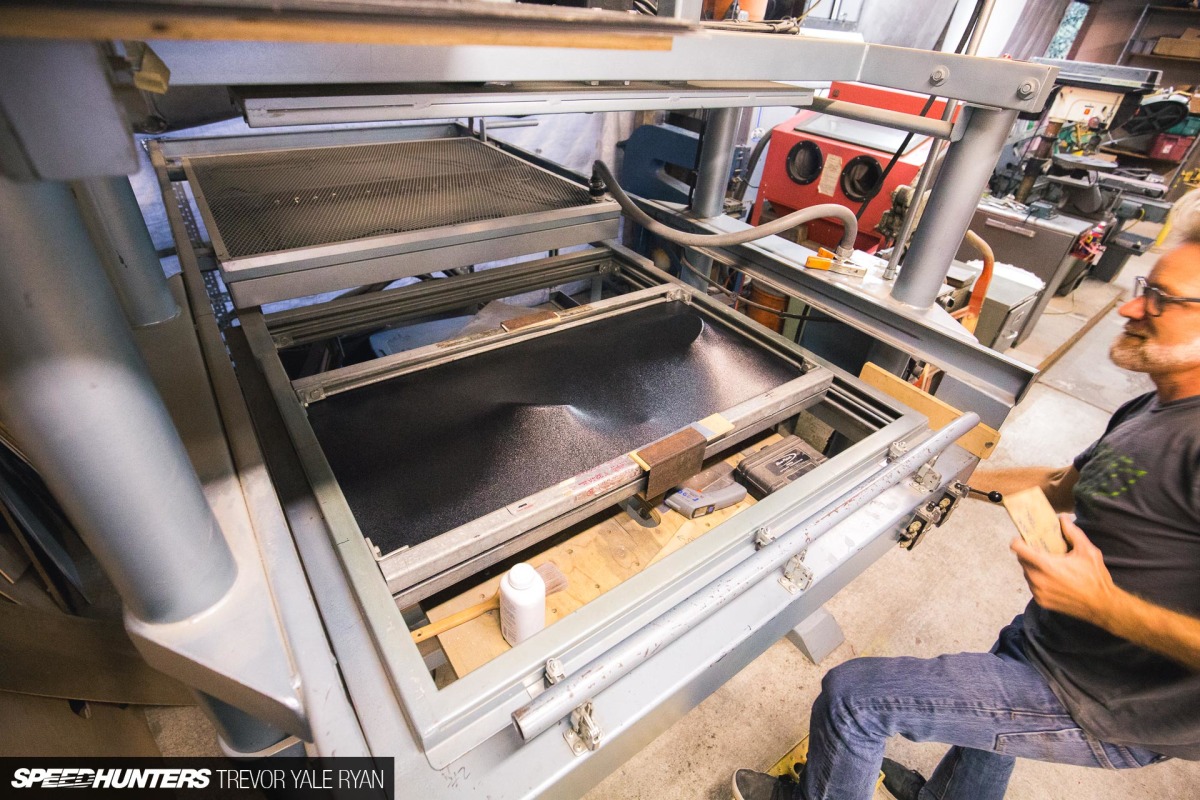
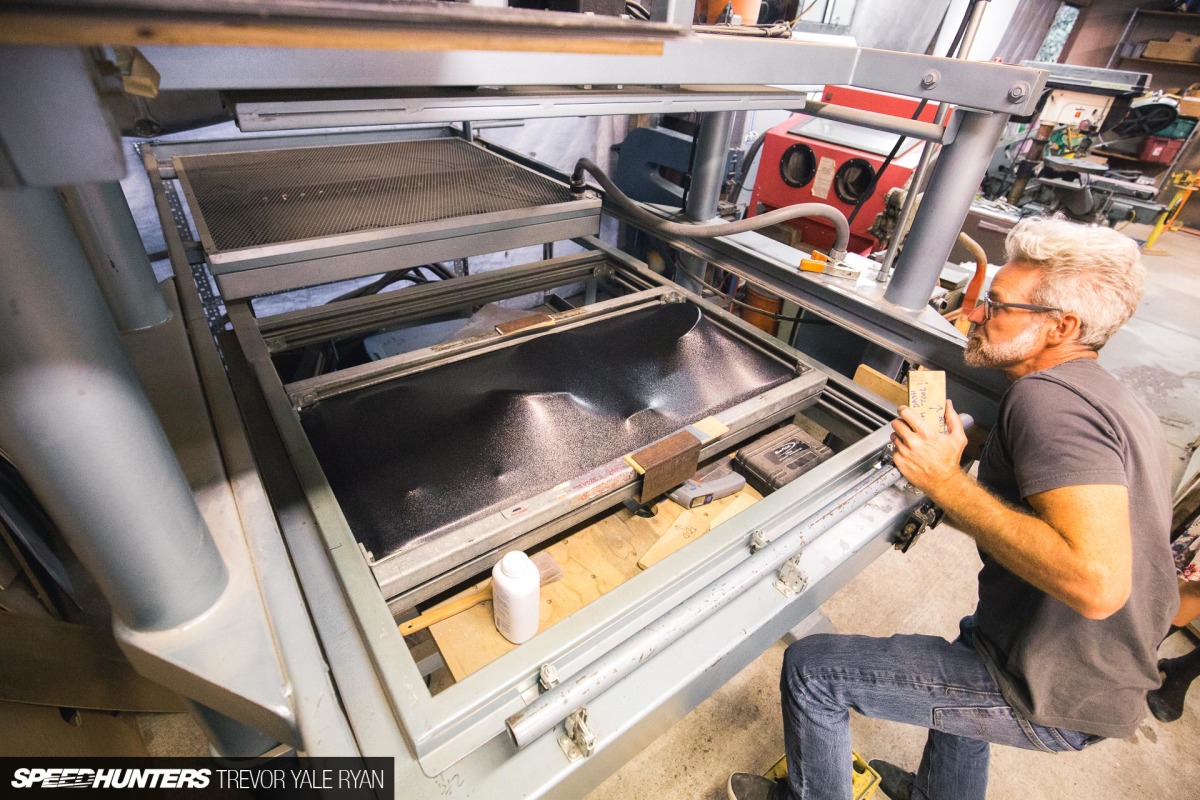
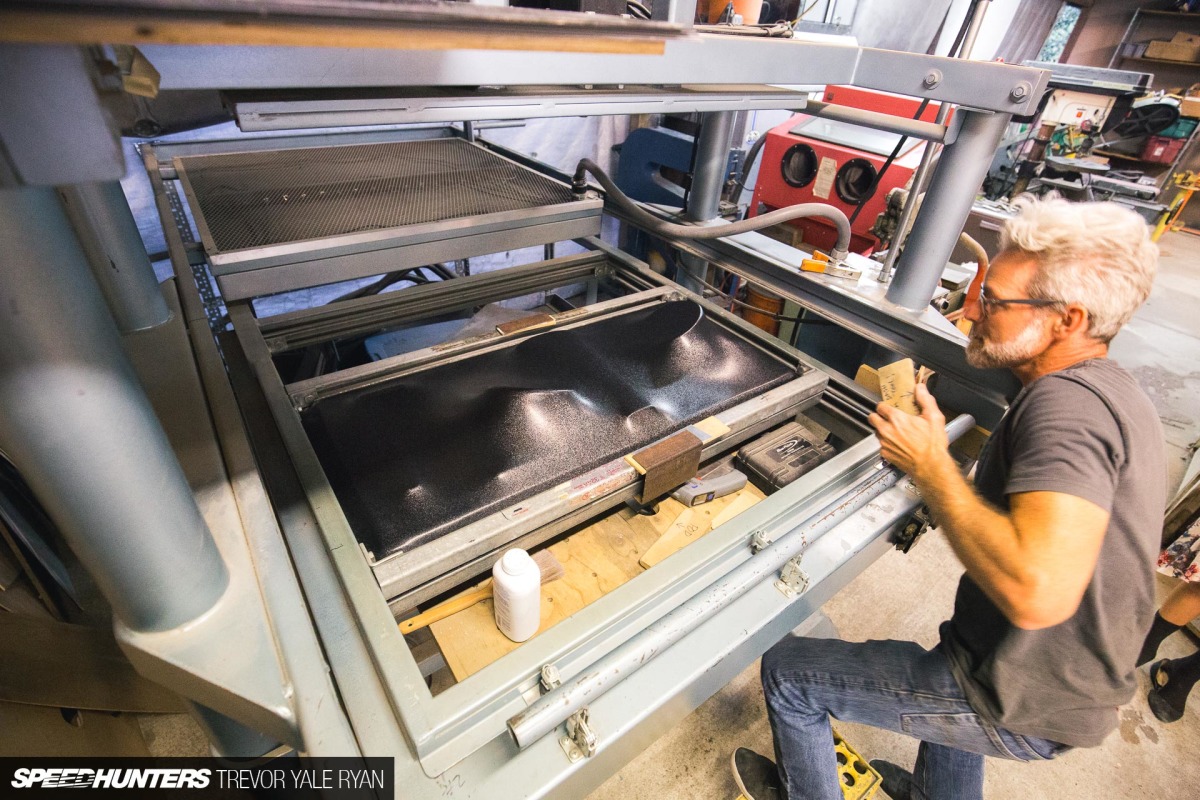





These guys have the mindset and capabilities for their craft that ALL auto aftermarket designers should have and execute. Too often these days flaws are ignored or looked past in the name of evolution...not here!
This is really a great idea - articles on the nuts and bolts of specific fabrication processes.
How many people would be inspired to build projects if their spark of inspiration was simply a bit of knowledge on HOW a part or assembly was made?
Why not do a whole series on manufacturing processes?
Welding, vacuforming, media blasting, painting, bodywork, etc.
I got to play with some vacuform equipment a couple months back. Seriously opened my eyes. Of course, that facility actually specializes in injection molding, which has even more capability.
A Triump TR6 with F20C? That's interesting...
Last time I saw Mt. Hood, I was a fair bit north of Santa Rosa. More like Portland, Oregon.
Great story, nonetheless.
I stand corrected - another Mt Hood lies between Sonoma & Napa.
That's brilliant. I have been a designer for the best part of 16 years... and I've always felt I never could get a look in to another role within design without some silly-ass piece of paper, only obtained when you are "taught" by graduating students that couldn't find work but also acquired same silly-ass paper. The truth of it is that, everyone can lecture these days, but it is SO hard to find a teacher that cares about the craft. These guys care about their craft. Look at those illustrations!! And the finish!! Just don't expect this kind of knowledge out of your local university 30-50k ain't buying what it used to.
30-50k ain't buying what it used to.
More stories like this thanks!
We have one of the large vacform machines at work, and it opened my eyes for sure. Along with the large CNC router for building proto parts. Would love to have it at home for projects.
What about PVA mold release spray on film for those problem areas of the mold??